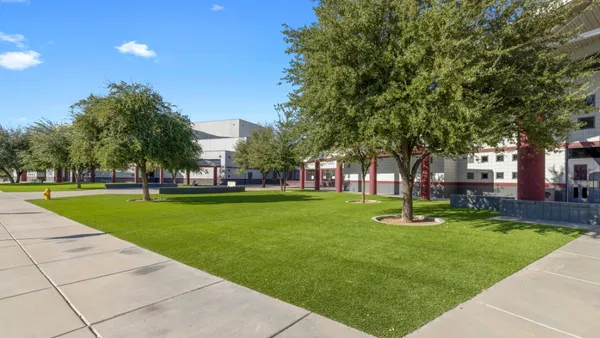A perfect storm of financial pressures, from declining enrollment to escalating economic uncertainty, are pushing K-12 school district budgets to their limits.
To adapt, districts nationwide are embracing innovative strategies to shore up budget stability. From reducing facility operational costs to forging strong community partnerships, school district leaders can learn from these proven examples to safeguard their financial stability and maintain funding for critical student programs.
Securing revenue, and finding new revenue streams
The post-COVID recovery era has been especially challenging for the majority of school districts whose budgets are based on per-pupil enrollment or attendance. Fortunately, there are many examples of school districts that have successfully combatted budget shortfalls through community-driven student engagement, retention and attendance programs. And with shifting populations and school choice schemes on the rise, school districts are also growing more adept at differentiating themselves through strong communications programs and visible investments into modern facilities. These strategies impact budgets by attracting new residents and strengthening student retention.
More districts are also looking to partnerships with local utility companies like utility rebates, net-metering programs, and demand response incentives. These programs reward smart energy management (i.e. energy efficiency upgrades, on-site renewables, and strategic energy usage) by offering direct cash infusions and bill credits that can improve a school’s budget health.
Richland County School District One in South Carolina, for example, was able to take advantage of a net-metering program with their local utility after installing nearly 9MW of rooftop solar across 15 campuses. These solar upgrades will save the district over $29 million in energy costs over the next 20 years, more than funding themselves while creating a new financial cash flow into the district’s budget. This project also enables new STEAM curriculum, engaging students in energy generation and conservation in hands-on learning labs.
Eliminating cost volatility and avoiding unexpected expenses
Most US school districts are grappling with a portfolio of facilities that are decades past their prime. Maintaining those aging facilities often becomes reactive rather than planned—leaving districts vulnerable to costly, disruptive emergencies. This cycle of crisis spending is unsustainable, driving up long-term costs. That’s one reason why, in their 2025 Infrastructure Report Card for America’s Schools, the ASCE calls to, “urge school districts to adopt life-cycle cost analysis principles in planning and design processes to evaluate the total cost of projects and achieve the lowest net present value cost, including life-cycle O&M, in addition to capital construction.”
Outdated HVAC systems, leaky building envelopes and inefficient lighting also strain budgets by consuming massive amounts of energy. With energy price volatility on the rise, inefficient energy usage can present a threat to predictable budgeting, particularly for public schools already navigating tight financial constraints.
School districts like Greene County Schools (GCS) in Tennessee are seeing big budget impacts from taking a proactive approach to facility and energy management. Facing a growing list of deferred maintenance projects, including more than 400 aging HVAC units, GCS turned to Schneider Electric to help design a comprehensive, long-term energy management strategy that allowed the district to reallocate savings toward deferred maintenance.
Support top-line priorities by capturing O&M cost savings
Operations and maintenance (O&M) represent the second-largest expenditure in most school districts, right after personnel. Unlike staffing, however, these costs can be reduced without sacrificing student outcomes. By investing in facility modernizations—like smart building controls, LED lighting, water conserving plumbing, and clean energy technologies—schools can dramatically lower their utility bills and maintenance costs. These savings, when captured strategically, can be diverted back into what matters most: academic programming, staffing, and student engagement.
Gilbert Public Schools (GPS) in Arizona discovered first-hand how energy improvements can be an excellent tool to achieve budget sustainability. GPS started by upgrading to high-efficiency LED lighting across the district’s gymnasiums, allowing them to turn a $257,000 initial investment into more than $1.2 million in lifecycle savings over the life of the project. Next, GPS made modernizations that reduced water usage and lowered maintenance costs, from which the district ultimately realized $12.9M in lifecycle savings.
Finding budget stability in times of uncertainty
Times are uncertain, but as these stories show, budget stability is still within reach. Through smart resource optimization and strong community partnerships, schools can safeguard funding for their top priorities.
Visit Schneider Electric’s K-12 Education Hub for more inspiring success stories and insights into our budget stability solutions tailored for schools.










